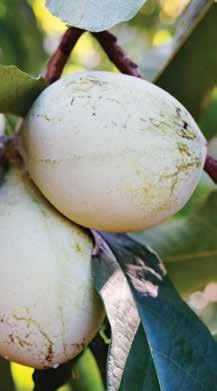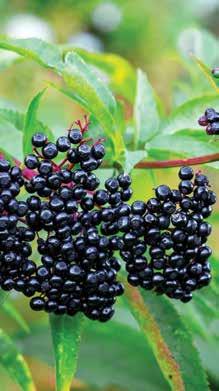
7 minute read
Helpful Apps for Families during Covid
from FF May 2021
by Forsyth Mags
Here we are over a year into the COVID-19 pandemic, and I think we can all say we’ve learned a thing or two from these unprecedented (in our lifetime anyway) circumstances. I know our family has learned to count our blessings, how to tolerate one another more graciously, and what a wonderful thing it is to be able to stay connected with the people we love. On that note, we have identified some helpful Apps that have gotten us through the difficult lockdown days and reminded us to stay hopeful, because this is not forever, but only for a season, and we will make it through!
Zoom
Advertisement
The pandemic has created a Zoom boom! In the last part of 2019, Zoom reported 10 million “daily participants”; and by April 2020 the number had climbed to over 300 million.
There are many videoconferencing options, including Skype, Google Hangouts, Microsoft Teams and Cisco Webex. All of these services have their advantages. However, Zoom is what the Winston Salem Forsyth County Schools chose to use when schools went virtual, and many other Zoomers chose the service because of its relative simplicity. Just click a link and you’re soon Zooming with others.
Door Dash
I have to put this one near the top because although it can seem a little decadent (especially in nonpandemic times) and it can become pricy if you use it too much… it has been an app that has just made my family happy. I mean it has given us joy (true joy) in the difficult days when restaurants were closed and we wanted our favorite foods. We are a family that loves to eat and door dash with its no- contact delivery, prompt and reliable service was a friend to us! Uber
Eats and Grub Hub are also in this category,
I just don’t have the same experience with their service.
House Party
House Party is another app that has been useful (more for the kids than for the adults). It has allowed them to stay in touch with friends and have easy group chats. This app lets you know when you have a friend “in the house” and allows you to chat in groups of eight people. There are also built-in games you can play with your chat group like “Uno” and “Trivia.” Pretty cool!
Collaborative Spotify Playlist
This has been a fun pastime in our family and a way to learn about each other. Who knew we actually liked some of the same music? Spotify allows you to sign up for a family plan where each member has their own designated account. It also allows users to create collaborative playlists that give friends and family the rights to add, delete or organize songs together. You can get really creative and even amuse each other with this feature. For example, I love adding “Air Supply” songs to my 17-year-old’s playlists.
NextDoor
In the first place, Nextdoor is a great way to get to know your neighbors. In the second place it’s a way to find out all the things you never knew were happening in and around your neighborhood. There are lots of great benefits to using this app—getting referrals for almost anything, finding out the holiday trash pick-up schedule, following lost pet updates, learning about new stores and restaurants…so many other things! Speaking of trash pick-up…I’m personally on the look-out for the bulk pick-up schedule in my neighborhood. One woman’s trash is another’s treasure!
Netflix, Hulu, Amazon Prime, YouTube
Who doesn’t love movies and TV? I love both, and my husband and the kids can be happy watching YouTube videos for hours at a time…especially when our other activities and social outlets have been limited. These apps have helped us get through the difficult and boring days of sheltering in place. If you have a Prime membership there are many titles that are free to watch on this service.
There are so many more useful apps that have helped us through the difficult days of the COVID pandemic, but these are the ones that have meant the most to our family. I hope you and yours have found ways to bring comfort to your lives during these challenging times as well. Hopefully we will not need to rely so much on indoor entertainment in the months to come!


Planting RaRe - Yet native FRuits

BY LISA S.T. DOSS*
Outside the city limits, the scene quickly changes from houses to miles of open fields. In May, blooming flowers catch the eye of drivers, perhaps for the first time. Although they’re quite different in definition from wildflowers, these trees, shrubs, and flowers are indeed growing in the wild, their seeds scattered by the winds to beautify our state. In the blur from the window, identifying individual species is virtually impossible. But just imagine the list of rare plants native to our location that could further flourish with a little human help! With some assistance in locating specific plants at a nursery, consider stepping outside your usual flora choices and instead choose a unique, fruitful tree, shrub, or plant that will benefit our creatures, insects, and flyers. You can grow plants from cuttings or purchase seeds and live plants from a reliable source.
What is Propagation? Walks allow the eye to take notice of flowers in their natural environment. How often have you plucked a blossom simply because the fragrance or coloring appealed to you? Rather than allow the stem to die, you have the means to facilitate the reproduction of a plant through propagation! It’s a goal you can achieve regularly. English Ivy, a spider plant, and even woody plants, such as six-inch stems with healthy shoots from elderberry or butterfly bushes, will grow roots if placed in water. Try it!
The Wild Elderberry Bush
Along roads and ditches, a passerby will see a shrub growing tall and wide with white flowers, and between August and September, purple berries! If dark purple stems are present, leading to the berry, then, you most likely have found a wild elderberry bush! The most popular species are the European Sambucus Nigra, and the American Sambucus canadensis, where you can find several varieties. When purchasing, find a nursery that focuses on growing elderberry plants. You’ll be most pleased with two-year-old barerooted plants.
PLANTING: Roots often grow near the surface, while the taproot acts as an anchor. As a rule, dig a hole three times as wide as the root system. Elderberries thrive with a combination of 1 part sand to two parts soil. Situate the roots near the surface; avoid burying the trunk. Water thoroughly and often! Add mulch to help maintain a level of moisture.
Paw-Paw Trees
Hikers will come across a grove of 12-to20-foot trees whose dark green, oblong tropical leaves appear out of place in North Carolina. The paw-paw has distinguishing dark brown buds that transition into maroon flowers. Appearing in clusters is the fruit. When ripe, the fruit will have a sweet custard flavoring, similar to a banana. Paw paws are mostly disease-free and resistant to fungus. Pollen-seeking insects will love their source of pollen and pollinate the grove!
PLANTING: If you have a location that receives morning shade and evening filtered sun, consistent moist ground, you may have the perfect spot! and hardier than the finicky blueberry. The result—the Jennybelle Juneberry! Its fruit is dark purple with tiny, soft seeds and tastes similar to dark cherries. Highly nutritious, and a rare fruit specimen is ready for harvest, yielding four to six pounds of berries, by mid-June!
PLANTING: As a medium-sized bush, it tolerates coarse sand to silty clay in soils with a pH level of 4.8 to 8.0 in full sun to part shade! Consider planting four feet between bushes and be ready for presummer picking after the third year!
“NC Wild Flower of the Year”
Our state Botanical Gardens holds 300 acres of land protected by the University of North Carolina at Chapel Hill. Every year it names a specific wildflower and offers free seed packets while supplies last. The 2021 winner is the “American Beautyberry,” a shrub that forms clusters of pink flowers in spring and summer; yet, deepens to a vibrant shade of magenta in fall. Some describe it as “neon-violet.” The berries are a source of food for the wildlife.
PLANTING: Found in the understory of woodlands, it requires a similar environment to thrive: direct sunlight with a high pH level and plenty of water!
The unique, native plants can brighten up your yard and become a conversation piece! Family, friends, and neighbors will undoubtedly remark on your attractive fruit and blossoms!
* Lisa Doss is an NC State Extension
Master Gardener Volunteer and a State
Certified Beekeeper.










